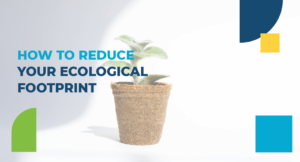Every year, we are witnessing a wave of new sustainable technologies aiming to tackle the
most urgent emergencies, thus bringing global solutions into our lives.
By definition, sustainable technologies represent innovations that intent to reduce
environmental and ecological risks by considering natural resources and fostering social
and economic development and advances.
Lately, businesses, institutions and individuals are starting to tackle climate change
through sustainable technology. Here are the latest ones that are shaping our environment:
- Solar Shingles:
They are solar panels that function as conventional waterproof roofing materials. Although
they look like regular asphalt shingles, they are able to convert solar energy into electrical
energy, from our homes. Aesthetically, their sleek glass appears more like regular roofs.
Solar shingles reduce CO2 footprint and energy bills; they’re good for the environment and
your pocket!
- Bladeless Wind Turbines:
They are simple turbines that have more advantages in terms of manufacture,
transportation, storage and installation as they are made up of only one structural
component. Their maintenance is simple since there are no bearings, gears or any other
moving parts. Bladeless wind turbines generate electricity for 40% less money. They are
environment-friendly as they help reduce noise and do not pose a threat to birds, like
traditional wind turbines.
- Smart floor tiles:
They are a unique technology of floor tiles made with sensors that sit under the top layer of
flooring. Through the “intelligent” tiles installed, the floor is capable of determining where
and the way a person is standing on the surface. They’re water-resistant, durable
affordable and low maintenance.
- Vertical Farming:
It is the practice of farming on vertical surfaces: it provides farmers with more food on less
land and does so in a sustainable way. It has many advantages as it’s highly productive and
requires shorter growing times and lower water use. Plus, fresh produce is grown closer to
where it’s eaten, thus reducing transportation cost and maximizing food taste.
- Electricity Generating Fabric:
It is an energy harvesting device that transforms vibrations produced from minor body
movements into electricity. The textile harvests energy from motion and pressure and is
durable and stable. Beyond minimizing greenhouse gas emissions, electricity generating
fabric saves money.
- Lab grown meat:
It is the harvesting of small samples of animal cells that are cultivated and growing outside
of the animal’s body, in labs. When growing, they take the shapes of fully formed samples of
meats. This operation does not require animal suffering and reduces greenhouse gas
emissions as well as water and land usage.
In conclusion, sustainable technologies enable the development of new products and
services that prevent deterioration, contamination and negative impact through their use
or production. They are also efficient in terms of energy and resources and make sure to
rely on biodegradable materials and renewable resources. The examples precited have
made their way into public use and innovations all around the world. They are necessary
and have an enormous positive impact on the environment.





